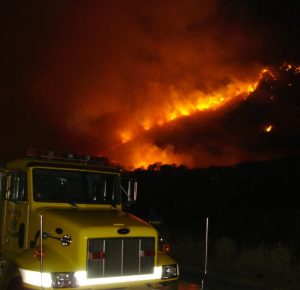Contents
 In what has already become one of the most catastrophic events in recent history, the fires ravaging Australia are responsible for losses in many areas. Every year, the threat and arrival of Australian wildfires create havoc within the country. With elevated risks occurring largely due to several contributing factors (extended drought, record heat wave), the wildfires of 2019-2020 have been particularly brutal in their devastation. Thus far, the losses extend to human lives, structures and homes, and a questioned figure of approximately one billion animals of all kinds. More than an accumulated 46,000,000 acres of land has been destroyed in this historic collection of blazes. Most of the damages have occurred in New South Wales areas.
In what has already become one of the most catastrophic events in recent history, the fires ravaging Australia are responsible for losses in many areas. Every year, the threat and arrival of Australian wildfires create havoc within the country. With elevated risks occurring largely due to several contributing factors (extended drought, record heat wave), the wildfires of 2019-2020 have been particularly brutal in their devastation. Thus far, the losses extend to human lives, structures and homes, and a questioned figure of approximately one billion animals of all kinds. More than an accumulated 46,000,000 acres of land has been destroyed in this historic collection of blazes. Most of the damages have occurred in New South Wales areas.
Extinction Is Possible
Of the animals, the deaths have impacted fish, reptiles, kangaroos, koalas, birds, and other lifeforms that existed within the regions affected by the fires. The impact is so terrible that it is surmised that some creatures are likely to become extinct from the wildfires. Not only animals and human lives have been impacted, but also the lives of several hundred plant species, many of which now face extinction.
The Toll On Native Birds
An estimated 70 species of birds have been affected. These include the red-lored whistler, the red-tailed black cockatoo, the lyrebird (which now mimic the sounds of sirens), the glossy black cockatoo (which have lost more than half of their habitat), and the Southern emu wren. Early assessment studies have discovered that 19 bird species have lost more than 50% of their respective essential habitats. An additional 57 bird species have lost around one-third of their habitat. Birds impacted might even become considered critically endangered and added to an already disturbing and growing list.
Effects Of Habitat Loss
The large-scale deaths of creatures within the ranges affected is catastrophic, but so is the decimation of the habitats where they lived. Loss of habitat affects their abilities to recreate and repopulate their species. With millions of acres destroyed, no trees and grasses exist to protect the animals from other threats and to provide a hospitable place to live. It will take a long time for the lands to heal and the ecological habitats to be restored to properly sustain life.
Assessing The Damage And Looking To The Future
The full scope of the devastation is not yet completely known. Eventually, after the current blazes have been extinguished and the fire season has ended, a complete and sobering evaluation will emerge with terrible facts. Those facts will definitely become a clarion call for a strong effort to help avoid future fiery catastrophes that result in the potential reduction or obliteration of species.
More needed than ever before are the donations of many to help restore the damage that this season’s wildfires have wreaked. If you’re interested in helping, please give this link a start. But there are many that you could research and donate to as you feel you should.
Volumes of records and pages will be produced for the destruction of species from the 2019-2020 wildfires. Their words and heartbreaking photographs warning of the uncontained destruction of areas due to long droughts and more frequent heat waves.
Let us hope for the best humanity has to offer in the protection, conservation, and restoration of our precious resources and the life within our world.






Just letting you know people are out there, paying attention. Thank you for this thoughtful assessment. And best wishes. I will share this around.
This terrible terrible burning of what one could call the ‘Garden of
Eden’ for its beauty in plants, flowers, trees, animals, fish and birds
and people and their homes and livelihoods just sickens me. We can donate and pray that a situation such as this never comes about again. And all caretakers of the world learn how to become
more concerned and better stewards of all the beauty that surrounds us.
What’s about breeder/companion birds dead in the Aus fires? Why is no one mentioning these souls? Gippsland/Vic is full of bird breeders
This is so disturbing to me. Can’t we as humans do better than this as caretakers of this planet? Why aren’t the world leaders doing more to solve global change? Getting RID of BIG OIL is what needs to happen!!